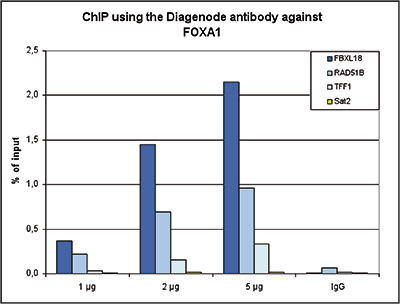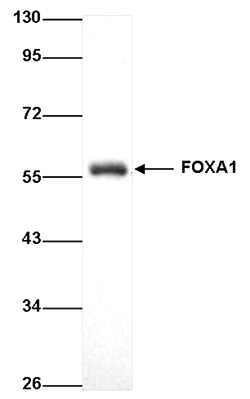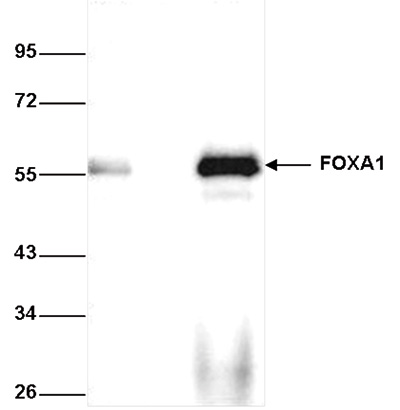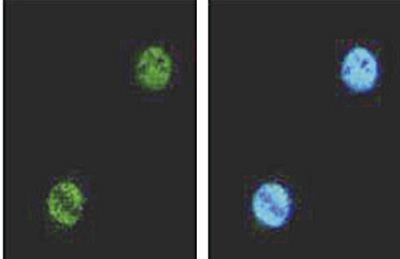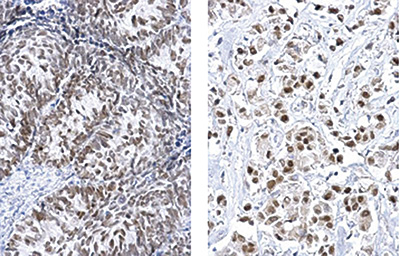FOXA1 (UniProt/Swiss-Prot entry P55317) belongs to the forkhead class of transcription factors. FOXA1 was originally discovered as a transcriptional activator for liver-specific transcripts such as albumin and transthyretin. It is also involved in embryonic development, establishment of tissue-specific gene expression and regulation of gene expression in differentiated tissues, as well as in cell cycle regulation.


